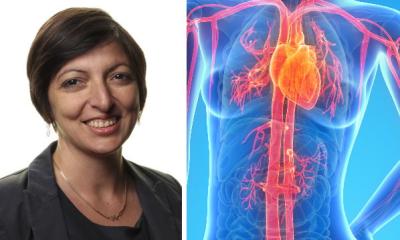GGT level proves a strong risk factor for cardiovascular disease
A connection has been discovered between raised levels of the liver enzyme Gamma-Glutamyl-Transferase (GGT) and the probability of death from diseases of the cardiovascular system or strokes.

During the study, scientists at Innsbruck Medical University, with experts at the Working Group for Preventive and Social Medicine in Vorarlberg, analysed examinations of around 164,000 healthy adults (89,000 females and 75,000 males) carried out in Vorarlberg from 1985 to 2001.
A research team, headed by Hanno Ulmer, Professor for Medical Statistics and Dr Elfriede Ruttmann-Ulmer, of the Department for Cardiothoraic Surgery at Innsbruck Medical University found that the GGT enzyme - previously only important in liver diagnostics and the evaluation of alcohol consumption – is often significantly raised many years prior to the occurrence of fatal heart disease or strokes. Through the measurement of GGT in the blood, and analysis of other known risk factors, e.g. high blood pressure, smoking, raised cholesterol or diabetes, it is possible to improve the early detection of cardiovascular disease. This opens up new, possibly vital opportunities for preventive medicine. ‘Participants in the study with raised GGT, compared with people with normal GGT levels, had a more than 1.5 times higher risk of dying from cardiovascular disease,’ Prof Ulmer said. ‘For people aged under 60 this risk was more than twice as high.’
21.9% of the male and 15.6% of the female study participants had raised GGT levels (>28 U/l in men and >18 U/l in women). During study period 6,990 deaths occurred, 3,027 (43.3%) due to cardiovascular or cerebrovascular disease. Men with raised GGT levels (>28 U/l) had a 28% higher risk of dying from cardiovascular disease, men with significantly raised GGT (>56 U/l) had a 64% higher risk. In women the risk increased by 35% (>18 U/l) and 51% (>36 U/l) respectively. Raised GGT in younger people presents an even higher risk constellation than in older people. Men with raised GGT showed increased mortality with chronic coronary disease, heart insufficiency, ischaemic insults (stroke through vascular obliteration) and haemorrhagic insults (stroke through haemorrhage). No statistically significant effect was seen in acute coronary disease (such as acute heart attack) or other forms of heart disease. Women with raised GGT showed a higher risk for all forms of heart disease. This connection was not statistically significant for deaths caused by cerebral apoplexy. GGT is a statistically independent risk factor; the inclusion of age, gender, smoking, blood pressure, cholesterol, triglyceride, blood sugar and social status does not change this assessment. Raised GGT, compared with other established risk factors, is a comparatively strong risk factor and ranges in third place, after smoking and high blood pressure but before raised blood sugar, cholesterol and triglyceride. The results of the study showed a correlation between GGT and cardiovascular mortality. The pattern (the higher the GGT level the higher the mortality) is consistent across the various subtypes of cardiovascular disease. Measuring the liver enzyme GGT has been a standard procedure to monitor liver function in clinical routine for many years. Although the connection between alcohol consumption and cardiovascular disease has been the subject of numerous studies, there have been few studies so far that have examined the connection between raised GGT and cardiac disease or strokes, although researchers at Pisa University showed, in an experimental study, that raised GGT is a possible indicator for the early development of arteriosclerosis.
Better chances for early detection
For Dr Hans Concin, scientific head of the Working Group for Preventive and Social Medicine in Bregenz, and co-author of the study, GGT now assumes a completely new significance. ‘Whereas previously it has been dismissed as an unspecific parameter, we now have a completely new situation, looking at it in combination with other, recognised risk factors. Raised GGT means raised risk and, in terms of disease prevention and health promotion, it calls for more precise clarification and early treatment.’ As GGT also correlates with known risk factors, e.g. obesity, diabetes, hypercholesterolemia, recommendations for the primary prevention of cardiovascular disease should also have a favourable effect on the reduction of GGT: smoking cessation, more exercise, healthy diet plus medicinal therapy of raised blood pressure and cholesterol. The study results could also lead to a change in thinking about prevention and therapy of arteriosclerosis, because raised GGT is also a helpful risk factor to identify patients at highest risk for impending vascular obliteration.
‘Further clinical and experimental studies are needed, to examine the exact pathomechanisms and their effects in more detail,’ say the authors. ‘In future, clinical intervention studies, GGT should no longer remain unconsidered.’ The transferability of the study results to other population groups must also be confirmed through epidemiological studies.
Publication: Ruttmann E, Brant LJ, Concin H, Diem G, Rapp K, Ulmer H (2005). Gamma-Glutamyl Transferase as a Risk Factor for Cardiovascular Disease Mortality: An Epidemiologic Investigation in a Cohort of 163,944 Austrian Adults. Circulation, in press
Contact: hanno.ulmer@uibk.ac.at
01.05.2006











